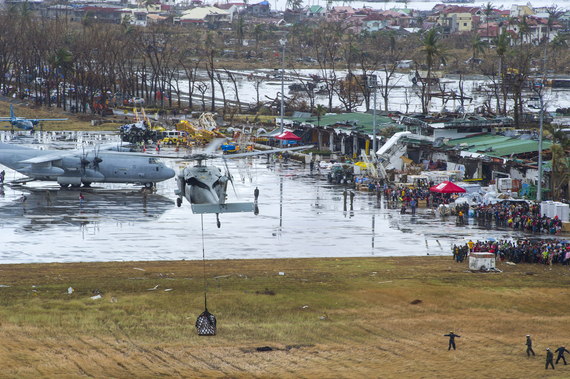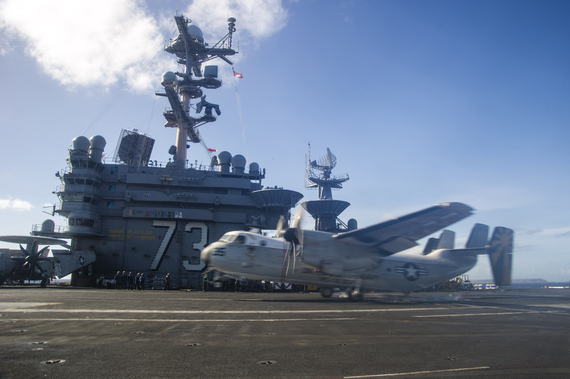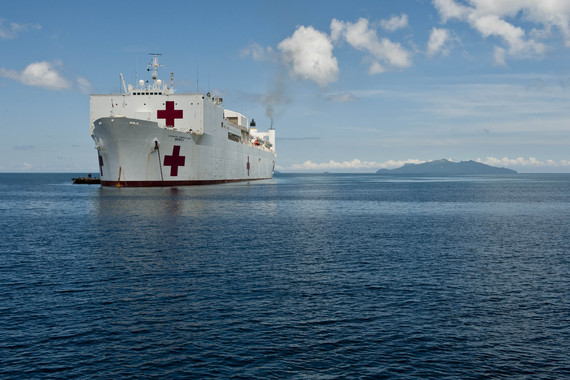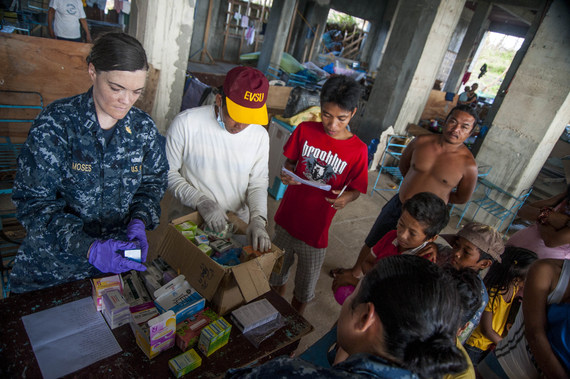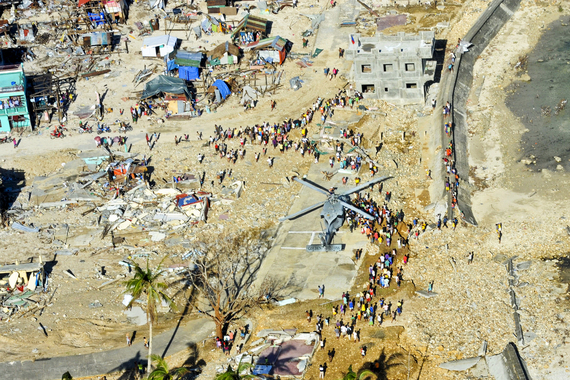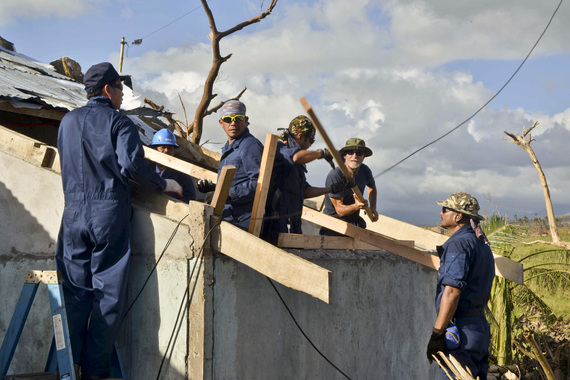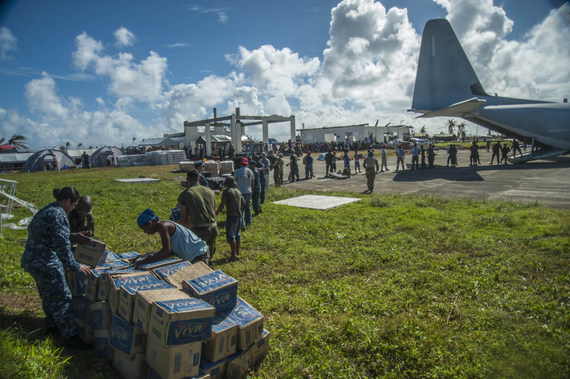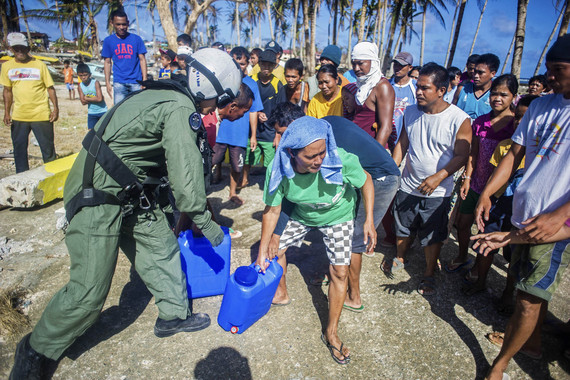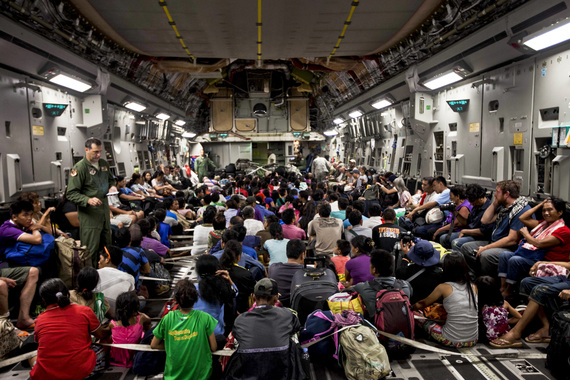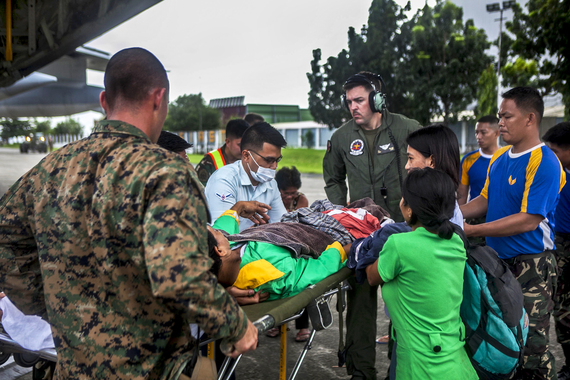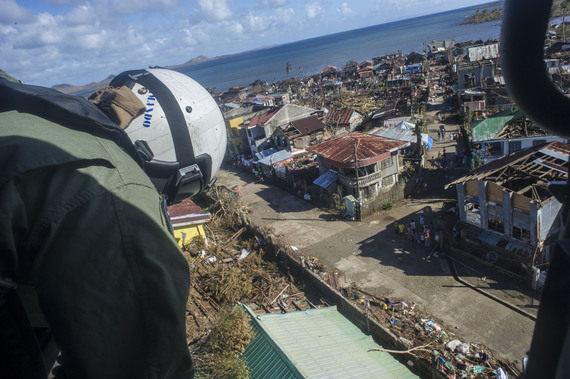The numbers vary, depending on the source, and they continue to change as more time goes by -- generally for the worse. But one thing does not change: the horror and the suffering these numbers represent.
Here are the most recent, heartbreaking numbers on Super Typhoon Haiyan.
On Friday, The Guardian reported a death toll of 3,261, and rising, with large numbers of bodies still unburied, 12,000 injured, 25,000 missing. ABC puts the number of homeless at 3 million and the Department of Defense reports that Typhoon Haiyan has impacted nearly 7 million Filipinos, destroying 150,000 homes across the 41 provinces in the Philippines.
The most recent United Nations report says the death toll is at least 4,200 and NBCNews.com reports that 13 million people have been affected by the typhoon and that of those affected, "4.9 million are children; 1.5 million are children under the age of five who are at risk of Global Acute Malnutrition (GAM)," and that 2.5 million people are in need of food assistance. Also that 248,176 homes have been destroyed and 246,435 damaged, among the latter 628 schools.
On the "heartwarming" side, NBCnews.com reports that 375,795 people have been assisted through food distribution, including rice, high-energy biscuits and canned goods as of Friday; that the World Bank has offered the Philippines a $500-million emergency loan to help it construct buildings able to withstand high winds and severe flooding; that the international community has donated aid and cash worth more than $248 million, a massive effort that "is beginning to show improvements on the ground" and that, so far, "$81 million has been contributed by donors, including United Nations member states and the private sector, including more than $20 million from the United States."
The Guardian also reported on Friday:
Authorities say 18,000 people are now involved in the rescue and relief effort. The flow of aid to the affected area has increased dramatically in the last two days as international aircraft, ships and personnel, including a US aircraft carrier group, have arrived to speed up distribution. On Friday a Norwegian merchant navy training vessel docked with World Food Programme supplies, including 40 tonnes of rice, medical equipment and [sadly] 6,200 body bags.
NBCNews.com also mentions a couple of similarly encouraging numbers and facts:
400,000: The number of gallons of freshwater the U.S. Navy aircraft carrier USS George Washington can produce in a day. The carrier arrived off Samar province on Thursday, carrying with it 5,000 sailors and more than 60 aircraft, according to the U.S. Navy. Along with the carrier and its team, various aircraft were also deployed to help deliver the clean water.
[::]
A barge carrying 2,000 metric tons of supplies, relief supplies, generators and vehicles shipped from Cebu City is expected to arrive on Nov. 17.
The above is a reminder that the U.S. military has been, from the very beginning, at the forefront in providing disaster relief and humanitarian aid to the people of the Philippines affected by typhoon Haiyan.
There are numerous photos of the rubber of U.S. military aircraft hitting the badly damaged ramps and runways in the Philippines (lead image) or the deck of an aircraft carrier...
A C-2A Greyhound carrying relief supplies for Operation Damayan makes an arrested landing on the flight deck of the USS George Washington, in the Leyte Gulf, Philippines, Nov. 15, 2013. U.S. Navy photo by Petty Officer 3rd Class Paolo Bayas
and reports of the many U.S. Navy ships sailing towards the Philippines bringing badly needed supplies, medics and medical care. (Below)
USNS Mercy, shown here off the coast of the Philippines, is being activated for possible deployment to the Philippines. U.S. Navy photo Petty officer 3rd Class Michael Feddersen
I believe, however, that the following images are more representative of where the rubber really hits the road. They are images of our troops directly helping, supporting and providing comfort and aid to those most in need -- lending a helping hand.
Lt. Lauren Moses, left, from Port Townsend, Wash., a physician assistant aboard the aircraft carrier USS George Washington (CVN 73), assists Philippine nurses in treating patients at the Immaculate Conception School in support of Operation Damayan. U.S. Navy photo by Mass Communication Specialist Seaman Beverly Lesonik.
Philippine citizens gather around an MH-60S Sea Hawk helicopter from the Golden Falcons of Helicopter Sea Combat Squadron (HSC) 12 as it delivers relief supplies in support of Operation Damayan. (U.S. Navy photo by Mass Communication Specialist 3rd Class Peter Burghart)
Sailors from the Military Sealift Command dry cargo and ammunition ship USNS Charles Drew repair a roof during Operation Damayan. U.S. Navy photo by Mass Communication Specialist 3rd Class Brian H. Abel
Sailors assigned to the aircraft carrier USS George Washington (CVN 73), Marines from the 3d Marine Expeditionary Brigade (3d MEB), and Philippine civilians unload relief supplies that were airlifted ashore in support of Operation Damayan. (U.S. Navy photo by Mass Communication Specialist Seaman Beverly Lesonik)
U.S. Navy Petty Officer 2nd Class Jason Rimando delivers containers of drinking water to Filipino civilians in support of Operation Damayan in Henane, Philippines, Nov. 16, 2013. Rimando, an aircrewman, is assigned to the George Washington Strike Group in support of the 3rd Marine Expeditionary Brigade. (Photo U.S. Navy)
Displaced people of the Philippines and international personnel prepare for takeoff inside a C-17 Globemaster III during Operation Damayan from Tacloban Air Base to Manila, Nov. 15, 2013. The aircraft is assigned to the 535th Air Lift Squadron from Hickam Field, Honolulu. The 3rd Marine Expeditionary Unit is supporting the Philippine armed forces in providing humanitarian aid and disaster relief to areas affected by Typhoon Haiyan. U.S. Marine Corps photo by Sgt. Jonathan Wright
U.S. Marine Staff Sgt. Jacques Mason, right, and U.S. Marine Cpl. Zachery Stapf, help an injured Filipino civilian from a C-130 Hercules aircraft at Vilamor Air Base in Manila, Philippines, Nov. 12, 2013. U.S. Marine Corps photo by Cpl. Codey Underwood.
Naval Aircrewman (Tactical Helicopter) 2nd Class Jason Rimando, from Torrance, Calif., searches for a clear landing zone for an MH-60R Seahawk with the "Saberhawks" of Helicopter Maritime Strike Squadron (HSM) 77 to deliver relief supplies in support of Operation Damayan. (U.S. Navy photo by Mass Communication Specialist 3rd Class Paolo Bayas)
Lead image: A U.S. Navy MH-60S Seahawk helicopter, center, assigned to Helicopter Sea Combat Squadron 25 prepares to drop supplies over Tacloban Airfield in Tacloban, Leyte province, Philippines, Nov. 14, 2013, in support of Operation Damayan. U.S. Navy photo by Petty Officer 3rd Class Ricardo R. Guzma
All photos by the Department of Defense for public release.

